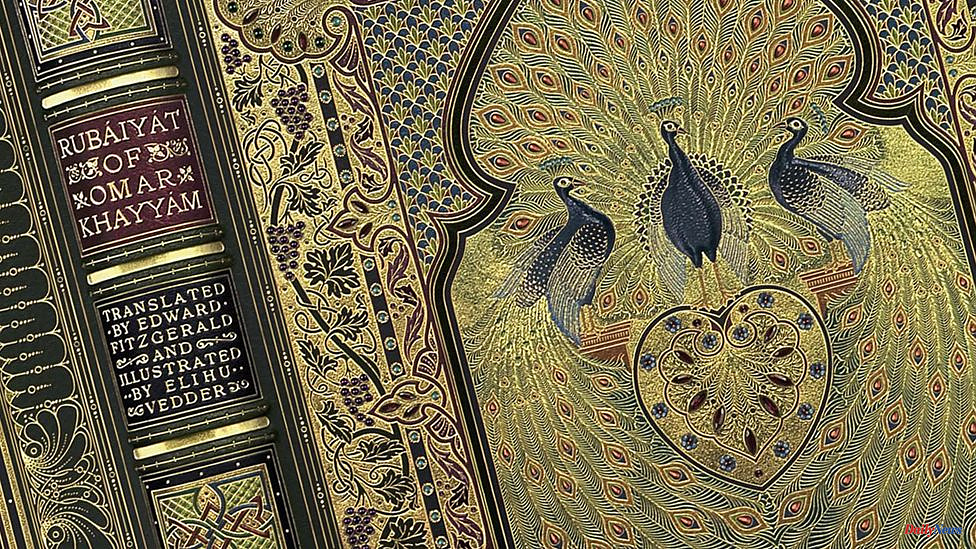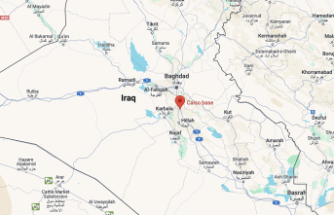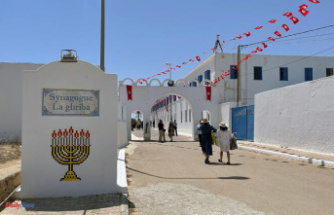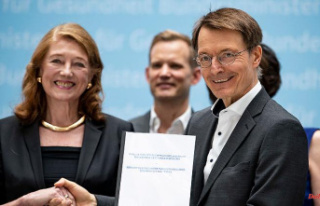In April 1912, one of the most extravagantly decorated books in the world was shipped from London to New York. The Rubaiyat, Omar Khayyam's jewel-encrusted edition was transported aboard the RMS Titanic. It sank to its bottom in the Atlantic Ocean exactly 110 years ago.
It was eventually replaced at great cost in the 1930s, but was quickly destroyed by German bombers after the Blitz.
This extravagant presentation of Khayyam's poetry by a young man would soon see his death in an English resort.
Who would dare to order a third "Great Omar?"
Francis Sangorski completed the 1911 binding he had been working on at his Holborn workshop over two years.
It was simply breathtaking.
The book measures 16 by 13 inches (40cm x 35cm) and is adorned with 1,050 jewels, including special-cut rubies, topazes, and emeralds. It was created with approximately 100 ft (9 m2) of gold leaf and 5,000 pieces leather.
Sangorski spent hours analyzing every detail. He even borrowed a skull from a human to accurately portray it in his artistic vision. To capture the horrific image, he even paid a London Zoo keeper to give a live snake to him.
The Daily Mirror called the final work "the most remarkable example of binding ever made". Some simply called it the "Book Wonderful".
It came with a huge price tag.
Bookbinder Sangorski, his business partner George Sutcliffe, were well-respected for their intricate jewelled covers.
Rob Shepherd, managing director at Shepherds, Sangorski & Sutcliffe - 21st Century version of the company that the two men founded in the Edwardian era, said, "Real jewelled bindings looked like Faberge eggs."
"They were of a high standard that would be difficult to duplicate today, as there has been a decline in skills over time. They were highly skilled in their trade. They were exceptionally skilled craftsmen."
They had met at evening classes in 1897, and they were apprentices to skilled craftsmen. This line included William Morris's TJ Cobden Sanderson, who was an eccentric man who ended his career throwing blocks of his typeface from Hammersmith Bridge into the River Thames.
Sangorski's and Sutcliffe’s work stood out, and they were awarded prestigious bookbinding orders, including one for King Edward VII.
Sangorski met John Stonehouse in 1907. He was the manager of Sotheran’s bookshop. It was established in 1761, and it is still in operation today. Sangorski shared with him his hopes for a book that had its origins in the 12th Century.
Although Sangorski has bound versions of Omar Khayyam's Rubaiyat of Omar Khayyam, the master craftsman stated that he was creating a new work with three peacocks. He would then surround it with jewelled decorations "as had never been seen before".
Stonehouse finally agreed to the commission after much negotiation. Stonehouse decided not to tell Henry Cecil because Cecil might oppose the project.
Stonehouse established a set guidelines.
Do it well and do it often; there's no limit. You can put whatever you want into the binding. I will accept any price you wish. As long as it is understood that the result and what you did for it are justified, the book is considered to be the best binding ever made.
"These are the only instructions."
The book was composed of six panels. These included the front and back covers as well as the inside of two boards (known as doublures). Two end leaves were decorated with Persian patterns, plants, skulls, and peacocks to symbolize life and death.
Both boards required hundreds of goatskin pieces to be cut and prepared. Numerous jewels were also needed, each with its own clasp. It took weeks to apply intricate gold tooling to all surfaces.
Shepherd says, "It was an extraordinary piece of work." "It was very much of it's time; the exuberance Edwardian England just prior to war broke out."
Stonehouse was also impressed and described it as the "best and most remarkable binding ever created or produced at any time or in any country".
Henry Cecil now being aware of this amazing creation and the incredible effort behind it, Sotheran's put Sotheran’s book up for sale for PS1,000, which is the equivalent to PS120,000 today.
It was three times more costly than any other item in Sotheran’s stock. Chris Saunders, the managing director of the bookshop, says that it was too costly for the UK market.
It wasn't just the price that was an issue. The Edwardian bling was not enough to dazzle some people.
"I believe that the Omar was probably viewed, I mean undoubtedly, by some people as tacky. It was very nouveau riche, and the old-fashioned Aristocracy were probably quite embarrassed by it," Benjamin Maggs says, a bookseller at Maggs Bros Ltd in London.
Sir John Fortescue, King Edward VII's Windsor Castle librarian, was a contemporary of this opinion. He declined the opportunity to purchase the Omar, later calling it "the most eminent fail, perhaps," and describing it later as "absolutely inappropriate", "ineffective, and insignificant" and "a positive distress to me personally".
Gabriel Wells, a New York dealer, was pleasantly surprised to find himself in London during the summer 1911. For the book, he offered PS800.
Sotheran's declined and told Wells he could get it for PS900. Wells declined and returned to the US quickly.
Due to a lackluster interest in Britain, the Omar decided to follow him to America which offered a more lucrative market for books.
It arrived in the USA, but there was a dispute about duty. Sotheran's refused US customs officials to pay and instead ordered the Great Omar to return to London. The search for a buyer continued over the following months.
Stonehouse wrote later that "a fatality seemed to follow it."
"Stonehouse had to sell the Great Omar in order to please Cecil, who he hadn’t consulted about the commissioning of the book. He then offered it to Gabriel Wells for PS900, and then PS650," states Mr Saunders.
Wells would not buy it.
"Cecil demanded, in a fit pique," that the item be sold quickly through an auction.
The book was sold at auction by Sotheby's without any reserve price on the 29th March 1912. Gabriel Wells, a London agent, paid PS405 for the book.
The Omar was ready for its return to America. The book was unable to cross the Atlantic on 6 April so it was taken instead aboard RMS Titanic.
Maggs states that "The Sotheran's idea is so fascinating." "The instructions the guy gave were: "There is no limit" - the same as for the Titanic.
"Make it as big and as practical as possible, regardless of whether or not it's practical or logical to do so."
Although the Titanic tragedy, which resulted in more than 1,500 deaths, is a well-known event of the 20th Century's most important events, little is known about the fate of the Omar aboard the ship.
It is likely that the book was kept safe by Harry Elkins Widener, a bibliophile. He was 27 years old and his parents, both from Pennsylvania's two richest families, were prominent Titanic passengers.
According to Mr Maggs who claimed Widener knew Wells, "The duty on this book would have been immense." The book dealer was already outspoken in the press about his disgust at the possibility of having to pay tax for the import.
Widener, an avid collector, was returning to the US after a trip to London to buy books.
Don Lynch, the official historian of Titanic Historical Society, said that the Wideners hosted a dinner at the ship's a-la-carte restaurant on the night of disaster in honor of Edward Smith, the captain of RMS Titanic. Warnings were sent to them about possible iceberg sightings as they ate.
Smith and the Wideners were accompanied by Mr. and Mrs. John B Thayer, of Pennsylvania Railroad; another wealthy Philadelphia couple, Mr. and Mrs William E Carter; Major Archibald W Butt (US President William H Taft’s military aide).
The party was over by the time that the ship hit the iceberg. Harry Widener was believed to have been present in the smoking room at the time of impact.
The disaster would be fatal for the bibliophile, just like his father.
The Great Omar was not the only valuable item that was lost in the sinking. The Merry-Joseph Blondel painting La Circassienne au Bain was also lost. An engine from the original flight machine was being shipped to Aero Club of America.
Lynch claims that the Omar was "perhaps most well-known" among the lost treasures. This is evident in its mention in Walter Lord's preface to A Night To Remember, which is the book that inspired James Cameron’s 1997 blockbuster movie.
The likelihood of the book being in its original state 110 years after sinking is up to Mr Lynch who, as a diver, has dived down to the wreck with Mr Lynch. He believes it all depends on how it was packed and stored.
"Once the leather was exposed within the ship, if it was indeed exposed, it may have been eaten but the precious stones would still remain."
The Omar is rumored to still be there, two and a quarter miles below the waves. Not that anyone was dismayed about its fate.
Sir John, King's Librarian, would declare that the Atlantic bottom was the best place to do it.
The fate of this book was just one of many stories about Titanic that were reported in newspapers around the globe.
"Everyone lost their investments in Great Omar," Mr Saunders claims.
Although it is not clear how much the Sotheran's accounts were destroyed in the Blitzkrieg of War World Two, he claims that there were tensions due to the Omar's death.
Mr Saunders states that "Sotheran's relationship to Sangorski & Sutcliffe was soured by disputes over costs, payments,"
Ten weeks later, another tragedy would strike.
Francis Sangorski was holidaying with his wife and four children along the English south coast when he decided to take a swim in the sea at Selsey Bill, Sussex.
Inquests revealed that he was knocked off his feet from a strong current. Sangorski was with a man who was in the water with him. He tried to save the bookbinder, but he left Sangorski to help his female companion, when she cried.
An hour and a quarter later, the body of Sangorski, 37 years old was found.
He was buried at St Marylebone Cemetery.
John Stonehouse was saddened by the loss of both his art and the man he loved.
He wrote, "Life for him was only the beginning of his career as a master craftsman."
Despite the death of its cofounder, Sangorski & Sutcliffe remained a company.
Stanley Bray, George Sutcliffe’s nephew joined the apprenticeship program in 1924.
He found Sangorski’s original drawings for the Omar and the tooling patterns in the company safe eight years later and decided to recreate this great work.
"I believe he was trying to impress his uncle," Mr Shepherd said. He wrote about the company in The Cinderella of the Arts.
Bray worked at home and in the office, for the Great Omar II. Just as Europe was being ravaged by war, the binding was completed.
The book was placed in a vault on Fore Street, London.
Fore Street was the first street that the German bombers struck in the City. The area was almost destroyed by subsequent air raids in 1940, 1941.
Finally, the rubble was cleared away and the safe that contained Bray's Omar was found. It was apparently unharmed.
It was found to be a blackened mass, due to the heat from the fire.
"It was essentially partially the protection that caused it to be damaged, so it was almost as an result of their efforts in keeping it safe – it wasn't safe. This is interesting to me, because the more you protect this book, the worse it gets," Mr Maggs states.
"So, just like the Titanic, you decide, "What's the best way to possibly ship this book to America? The unsinkable ships are the best way to send it?" This book is a conscious conspirato against you, and the more you try to make it worse.
The company's headquarters on Poland Street in London’s Soho survived the war without any damage, despite a firebomb landing just metres away.
Bray accepted the Great Omar's destruction while Britain was under attack from enemies. However, Bray made a comment: "If this are all I am going lose, I will be lucky."
Bray was enthusiastic about the Omar despite losing two books and years worth of work. In 1945, the country celebrated Victory Day. He began work on the third.
Many of the original jewels were reused.
Because of the limited time he could spend on the binding, he was forced to retire in the 1980s. The third Omar was completed after an estimated 4,000 hours' worth of labor.
Mr Maggs finds something almost romantic about Bray's final version.
"The fact Stanley Bray did it twice more - that's another reason he isn't doing it to make money. It's something else. It's become a symbol.
It's almost as if the most luxurious, luxury, capitalistic book in the world has outlived itself. It has become something truly priceless, and a thing made just for the sake.
Bray presented the third Omar at the British Library. In December 1995, his obituary described the book as "a monument of a long lifetime's work".
After the 2004 death of Bray's widow Irene, the Omar and related material were permanently transferred to the institution. Although the book is not currently accessible, it remains in the library's collections.
It appears that no "curse" has yet to take root.
Bray didn't think much about the idea. However, Bray commented on the design, "I am not in any way superstitious even though they say that the peacock symbolises disaster."
Mr Shepherd says that while some people believe peacock feathers to be omens for death, Stanley Bray was a good example of this.
"Indeed the book probably kept him going."
The gravestone of Francis Sangorski, a master bookbinder, is difficult to find in East Finchley Cemetery.
It is hidden among stones and trees, but its intricate carvings are worn and weathered.
Mr Maggs believes that the story of Omar the Great chimes with Omar Khayyam's theories, which inspired Omar Khayyam to create a memorial in leather, jewels, and gold for the poet-philosopher.
It's almost like a curse.
"That's what Omar is telling me," Mr Maggs states.
"If you have the means to afford it, why not?" Do it. Be aware that you will die, and that it won't be with you.
Copyright for all images
Story edited by Ben Jeffrey












